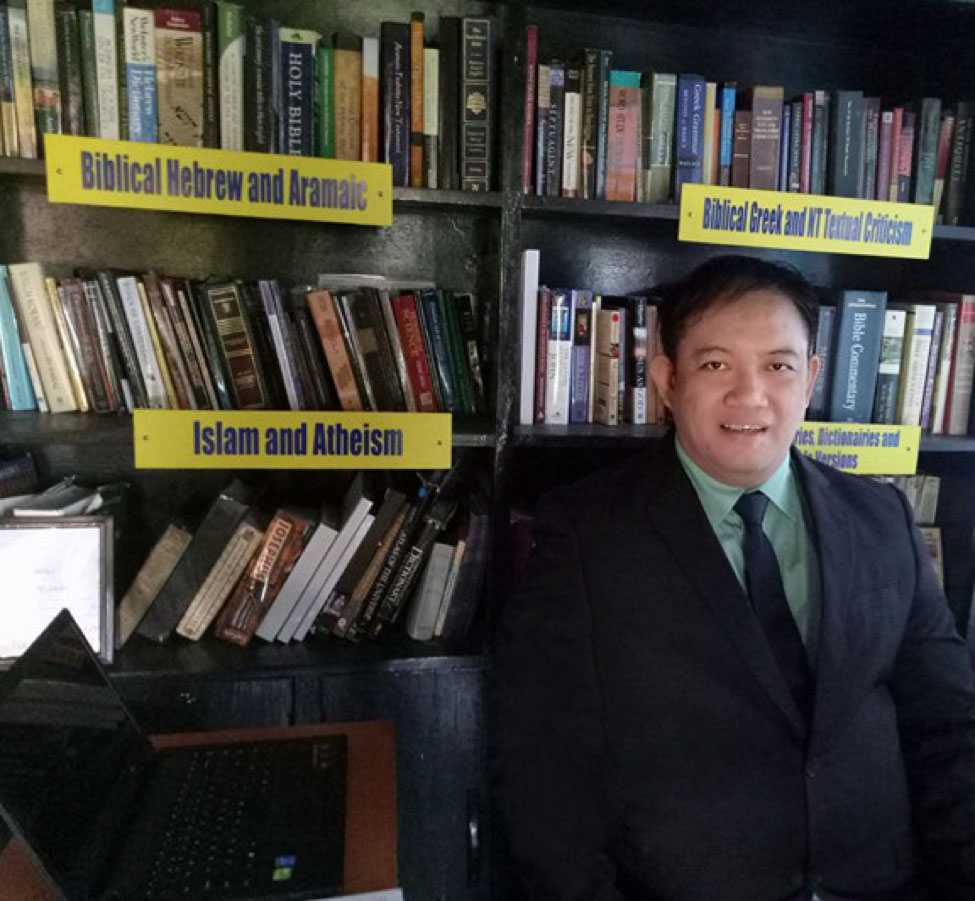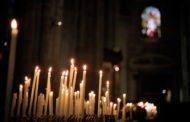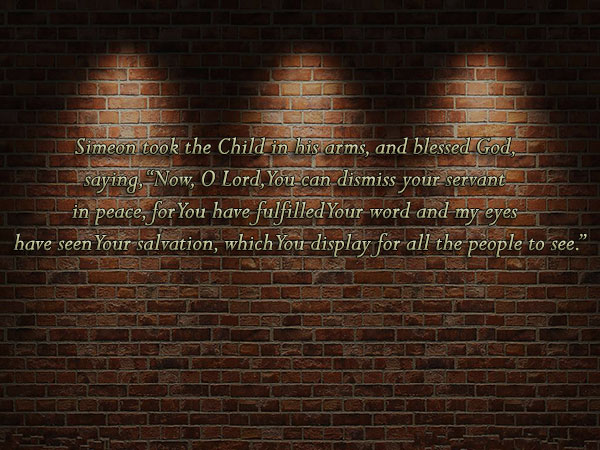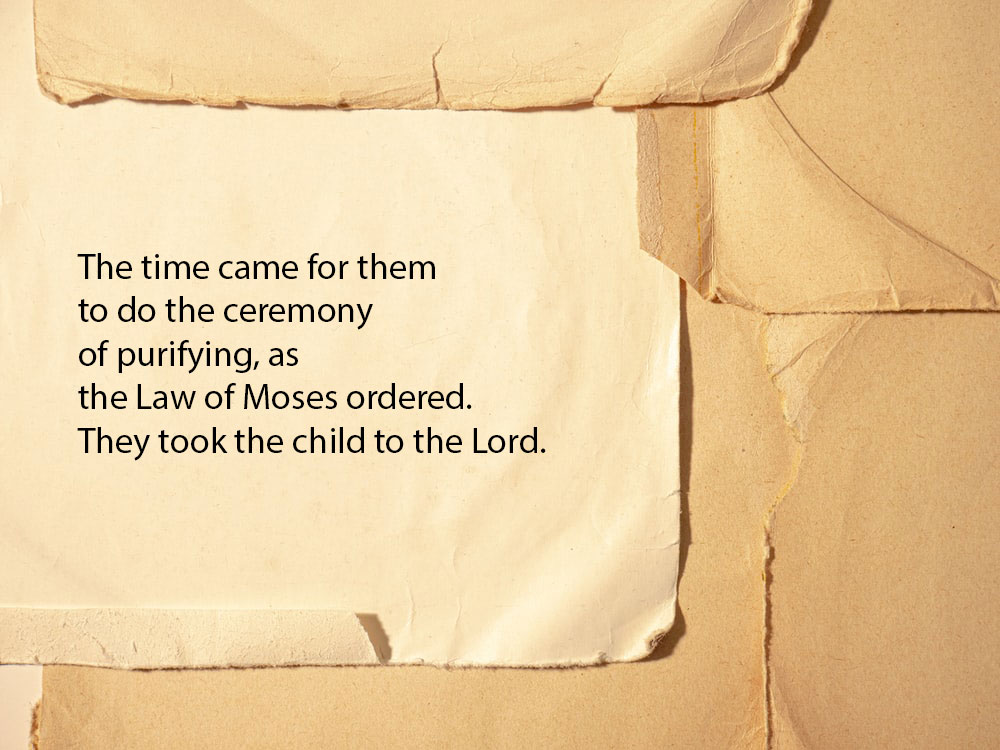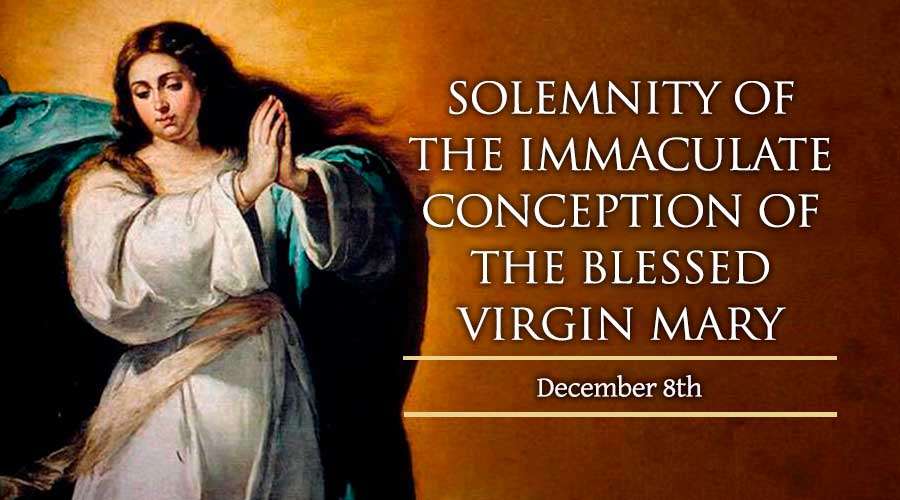by Reverend Father Richard P. McBrien
(Vols. I and II, 1287 pages
published by Harper San Francisco)
THAT ATE AU Roque is a familiar face – and sound – in Fr. Bobot Clemen’s Worship Commission’s periodic formation and renewal seminars accounts for her rich liturgical knowhow. Add to that a masteral degree in pastoral ministry from no less than the St. Vincent School of Theology and you get a lady in the mold of Mary (her name, Maura, being a derivative of the mother of God): silent, sober and seriously obedient to the Lord. Mary did not have the head so obeyed with her heart; Maura is blessed with a discerning noggin so followed with Mary’s heart.
Her silence is not permanent, however. When you engage her in conversation about her apostolate, the sobriety thaws and a rapid-fire seriousness takes over. Like you never imagined it possible to interrupt her train of tirade. All I could manage was tell her that filcatholic.org published my article on their recently conducted seminar. The next thing I know, her driver was toting two thick volumes of this feature’s title, for me to peruse. I will, to appease my spiritual inadequacy, try to at least simplify the pair.
On principle, I’m averse to voluminous reading materials. My passion is poetry, free verse, and I try to keep my pieces as short as my muse would allow. I have been dabbling lately in the sonnet form, an itch inspired by John W. Lynch. A friend by the same name gifted me with A Woman Wrapped in Silence and it has been difficult not to scratch ever since. So when I received the twin tomes, I looked forward to less leisurely reading. Not without trepidation because not only were the books authored by a priest, he is also a theology professor at the University of Notre Dame.
With such a daunting twin manuscripts, how, I mused, would I be able to reciprocate Ate Au’s gesture? Yet I started to flip the pages of what felt like venerable pieces of literature and read up. The two volumes were rife with theospeak from both the clergy and philoscholars. My dread never left me as I plodded. And arrived at the chapters on human existence, nature, grace and original sin. I grinned. Those words I could relate to. I browsed the chapters ahead and nibbled on mortal, serious and venial sins. My interest heightened. And got stuck on the chapter on God. I wanted so much to immediately share the euphoric sentiments with Ate Au, not because I wanted to outtalk her this time, but because of the overwhelming grace that suffused me as and while I read and meditated on the written words that seemed to soothe an emptiness I’ve always known existed but never felt filled.
Rev. Theodore Hesburgh, President Emeritus of the same University, foreworded the synthetical tandem with, “All too few Christians read theological books today, and I believe that is the reason why many Christians are uninformed, lukewarm and just plain confused as they face an ever more complicated world.” I share his optimism that the books will greatly profit the mind and the soul of any intelligent Anglican, Protestant, Orthodox or Catholic Christian.
I was heartened to reread in Fr. Richard’s preface that one American Catholic biblical scholar, now deceased, once spoke of his own work as so much “shameless borrowing.” The author foresaw that “many will borrow from (his) work, in turn. So be it, for it is intended as a resource to be used and disseminated widely.” With such Catholic generosity, I will attempt to capture the passages that captivated me with their original charm that many may further borrow from this enlightened, enlightening, wisdom-laden handiwork. With a prayer that those who might have the curiosity to browse them may cease to be “uninformed, lukewarm and plain confused” believers.
In his preface, Fr. McBrien clarifies that the reader needs only two resources: intelligence and a basic interest in Catholicism. Accordingly, words and concepts whose meanings theologians take for granted are defined and explained. The material is presented in an organized and – he hoped – easy-to-follow pattern. There are discussion questions for each chapter and, for those who wish to go more deeply into any section of the book, there are suggested reading lists at the end of each chapter. He offered other basic reference works which the reader might usefully consult.

Volume I.
Chapter I begins with the noun Catholic (and the adjective that is often affixed to it, Roman [parentheses mine]) and situates the reality of Catholicism in the wider context of human, religious, Christian and ecclesial existence. And finally identifies and describes the characteristics by which Catholicism can be distinguished from other Christian traditions, especially the principles of sacramentality, mediation and communion. As these themes run through the two volumes, I will not belabor them and pray my teaser would suffice to entice the reader to peruse the pair.
The books describe Christian faith as that gift of God by which we freely accept God’s self-communication in Christ. Whatever the precise relationship between Christian and Catholic faith, the books enumerate the general agreement across denominational lines that faith is utterly fundamental for the Christian life on earth and eternal life hereafter. A faith that one never thinks about or consciously expresses is no faith at all. A person who had such faith is like an individual who purchased a winning lottery ticket but never bothered to look at it and so never redeemed it. A gift, unless accepted, and the package along with it opened, is of no real value to the receiver. The purpose of the books, therefore, is not simply to educate readers about Catholicism but to help Catholics and (bold face mine) other Christians as well to think theologically, that is, to think for themselves about the meaning and practical implications of their faith. The readers are cautioned that to grasp the content of the books, they must grasp their method as well.
Faith, summarizes the books, always remains free because the “evidence” for it is never overwhelming. There are signs and witnesses but they are only external and never finally persuasive. The only motive of faith that ultimately counts is internal: the presence of the Holy Spirit.
The books define the Bible as a collection of books that are “sacred” because they are regarded as inspired by God and not simply the product of ordinary human creativity and effort, although they are that as well. How do we know, the author asks, that the Bible is inspired and immune from error in those matters which pertain to our salvation? Not an easy question to answer but the books aver the New Testament makes no claim about itself. The Catholic Church has always maintained that there is no other criterion except its own traditions and that these, in turn, are vehicles of divine revelation. The inspiration of the Bible has been believed from the beginning and, beyond that, the subject of an official definition by the Church. Even as we try to understand its meaning in the light of modern notions of authorship, history and psychology and sociology of knowledge, we recognize that the fact of inspiration is a given. One cannot be true to the Catholic and Christian faith without affirming at the same time the inspired, and therefore finally normative abd authoritative, character of the Bible. Chapter II further discusses faith and its outcomes.
God.
Part II is about God. It said that, in the final accounting, the mystery and doctrine of the Trinity mean that the God who will judge us, and who will give us eternal life, is not a God infinitely removed from us (the Father), but a God of absolute closeness, a God who is communicated truly in the flesh, in history, within our human family (the Son) and a God who is present in the spiritual depths of our being and in the core of our unfolding human history as the source of enlightenment and community (the Holy Spirit). The doctrine of the Triune God, it concludes, is at the heart and center of every Christian faith.
Belief and unbelief are two sides of the same human coin. They represent different interpretations of the mystery of human existence. The believer interprets reality and human existence as finally worthwhile, intelligible and purposeful. The unbeliever interprets reality and human existence as finally without intelligibility or purpose and, therefore, without ultimate worth. Neither belief nor unbelief can be established or disproved by arguments alone. The believer sees what the unbeliever does not see. Still, the believer’s perception is not arbitrary. There are dimensions of human experience which cannot be explained fully apart from the God-hypothesis – call them “depth experiences,” “signals of transcendence,” or whatever else. This does not mean that the case for belief is clearly the stronger of the two, but only that the case for belief is not without warrants.
Michael Novak expressed the problem movingly in his Belief and Unbelief, where he wrote:
“The believer need not forgive God for the suffering of this world; like Job, he may accuse God to His face. But he does not cease to remain faithful to the conscience which cautions him not, finally, to be dismayed. Belief in God, he knows, could be an empty illusion, even a crime against his own humanity. He knows the stakes. If he is faithful to his conscience and thinks clearly concerning what he is about, he has no place in his heart for complacency or that sweet pseudoreligious ‘peace’ that sickens honest men. His belief is not unsteady – quite the contrary – though he knows that the thread supporting it, however firmly, is so slender that in the night it cannot by any means be seen. This commitment to conscience keeps him faithful, and his daily experience may make his commitment as plausible as Sartre’s experience made his, but there is no final way short of death of proving who is right. Each man has but a single life, during which his choice may go either way. That choice affects many things in his life, but one thing it does not affect: his reliance on his own conscience (formed, no doubt, in friendship with other men) as his sole concern and comfort.
No one has seen God.”
I could not have cooked up a plainer parting shot if I tried.
Depth experiences.
Canadian theologian Gregory Baum, in his book Faith and Doctrine, identifies depth experiences as the elements of ordinary human experience which contribute to a believing as opposed to an unbelieving response. They are ordinary human experiences that are memorable, the source of many decisions and tend to unify human life. They may be specifically religious or secular but in the final accounting, they are all religious in that they ultimately put us in touch with God.
The specifically religious exper iences are the experience of the holy and the experience of contingency. The experience of the holy is what William James described in his The Varieties of Religious Experience as a “sense of reality, a feeling of objective presense, a perception of what we may call ‘something there,’ more deep and more general than any of the special and particular ‘senses’ by which the current psychology supposes existent realities to be originally revealed.”
iences are the experience of the holy and the experience of contingency. The experience of the holy is what William James described in his The Varieties of Religious Experience as a “sense of reality, a feeling of objective presense, a perception of what we may call ‘something there,’ more deep and more general than any of the special and particular ‘senses’ by which the current psychology supposes existent realities to be originally revealed.”
 iences are the experience of the holy and the experience of contingency. The experience of the holy is what William James described in his The Varieties of Religious Experience as a “sense of reality, a feeling of objective presense, a perception of what we may call ‘something there,’ more deep and more general than any of the special and particular ‘senses’ by which the current psychology supposes existent realities to be originally revealed.”
iences are the experience of the holy and the experience of contingency. The experience of the holy is what William James described in his The Varieties of Religious Experience as a “sense of reality, a feeling of objective presense, a perception of what we may call ‘something there,’ more deep and more general than any of the special and particular ‘senses’ by which the current psychology supposes existent realities to be originally revealed.”The experience of contingency is our feeling of radical dependency, our sense of limitation, even of insignificance and our concommitant sense of insecurity. At the same time we are profoundly aware that we belong to another who is vast, strong, caring, eternally reliable, that we are part of a larger unity which has meaning and in the context of which we find the strength to face life. It is an experience alluded to many times by Jesus Himself (in the parables of the lilies of the fields and the birds of the air).
The experience of friendship gives us a new kind of self-possession. We become reconciled with ourselves as we are accepted by another. And since we become more ourselves, we have more energy available for the mission of life. Closely related to this is the experience of encounter (as in a student-teacher relationship) that profoundly changes and shapes our lives.
Conscience, too, is a depth experience. It is the experience of moral responsibility. We realize the call to transcend ourselves and our own self-interest and to act on behalf of others. In doing so we sense that we are acting in accordance with what is deepest in us and thus opening ourselves to reality and to life as it is meant to be.
Truth is another depth experience. By certain moments in our lives, whether in conversation, research or reading, our resistance to truth is overcome and we experience a conversion of the mind to a higher level of consciousness. We suddenly see the picture. And because we see, we are able to plan and redirect our lives differently.
The experience of human solidarity makes us aware of the unity of the human family and its common destination to growth and reconciliation. The experience transcends our ideologies and even shatters them. We realize our interdependence. We share in the joys and sufferings of people everywhere. We recognize the deathly, inhuman character of prejudice, hatred and discrimination.
Connected with this sense is yet another depth experience, that of compassionate protest. It is the experience of those who become deeply disturbed by the misery in life, who are burdened by the presence of injustice, exploitation and war. Such persons speak out as prophets, accusers, critics, even at the risk of their reputations, physical safety and lives.
These depth experiences bring us in touch with reality at its deepest level and, in so doing, they bring us in touch with ourselves. As we reflect on the content and meaning of our human experiences, we begin to see that there is more to life than meets the eye. To believe means to affirm the intelligibility of reality and recognize the significance of our depth experiences. These experiences put us in touch with the God who is immanent to human life. They explain our lives and give them direction.
The books admit religion is very difficult to define and posit its description as the whole complexus of attitudes, convictions, emotions, gestures, rituals, beliefs and institutions by which we come to terms with, and express, our most fundamental relationship with Reality (God and the created order, perceived as coming forth from God’s creative hand).
Jesus Christ.
Of the seven-par t volumes, Part Three, Jesus Christ, is my favorite. The distinctively Christian element in Christian faith is the confession of the Lordship of Jesus. Christianity alone identifies Jesus of Nazareth with God. Jesus Christ is “true God of true God,” of one substance with the Father. The books claim that little justification is required for a separate section on the mystery of Jesus Christ. Christian theology, not to say Catholic theology, is centered on Him. Our understanding of, and response to, the triune God is a function of our understanding of, and response to, Jesus Christ. The books also explain why there is no separate section on the Holy Spirit (if the Christian God is a triune God) because the preoccupation of the New Testament is with God the Almighty and Jesus Christ. Further explanations substantiate this.
t volumes, Part Three, Jesus Christ, is my favorite. The distinctively Christian element in Christian faith is the confession of the Lordship of Jesus. Christianity alone identifies Jesus of Nazareth with God. Jesus Christ is “true God of true God,” of one substance with the Father. The books claim that little justification is required for a separate section on the mystery of Jesus Christ. Christian theology, not to say Catholic theology, is centered on Him. Our understanding of, and response to, the triune God is a function of our understanding of, and response to, Jesus Christ. The books also explain why there is no separate section on the Holy Spirit (if the Christian God is a triune God) because the preoccupation of the New Testament is with God the Almighty and Jesus Christ. Further explanations substantiate this.
 t volumes, Part Three, Jesus Christ, is my favorite. The distinctively Christian element in Christian faith is the confession of the Lordship of Jesus. Christianity alone identifies Jesus of Nazareth with God. Jesus Christ is “true God of true God,” of one substance with the Father. The books claim that little justification is required for a separate section on the mystery of Jesus Christ. Christian theology, not to say Catholic theology, is centered on Him. Our understanding of, and response to, the triune God is a function of our understanding of, and response to, Jesus Christ. The books also explain why there is no separate section on the Holy Spirit (if the Christian God is a triune God) because the preoccupation of the New Testament is with God the Almighty and Jesus Christ. Further explanations substantiate this.
t volumes, Part Three, Jesus Christ, is my favorite. The distinctively Christian element in Christian faith is the confession of the Lordship of Jesus. Christianity alone identifies Jesus of Nazareth with God. Jesus Christ is “true God of true God,” of one substance with the Father. The books claim that little justification is required for a separate section on the mystery of Jesus Christ. Christian theology, not to say Catholic theology, is centered on Him. Our understanding of, and response to, the triune God is a function of our understanding of, and response to, Jesus Christ. The books also explain why there is no separate section on the Holy Spirit (if the Christian God is a triune God) because the preoccupation of the New Testament is with God the Almighty and Jesus Christ. Further explanations substantiate this.The next chapter narrates the historical Jesus and the Christ of faith in relation to contemporary culture. Here, one can detect at least five Jesuses: Teacher, Ruler, Judge, King and Holy Man of God. There are also five models which describe the relationship between Christ and culture: Christ against culture; the Christ of culture; the Christ who is above culture; Christ and culture in paradox; and Christ the transformer of culture.
In the summary of The Christ of the New Testament, no one seriuosly questions that Jesus of Nazareth really lived. At issue is whether this same Jesus of history is also the Christ of faith proclaimed by the New Testament. The author, in order to reconstruct the process of development and come to a greater understanding of what the New Testament proclaims, enjoins us to employ historical criticism, form criticism and redaction criticism.
The resurrection of Jesus from the dead is both the starting point and the center of the early Church’s faith in Him as the Christ and Lord of history. Here, the books try to provide answers to the questions: Did it happen; what happened; to whom did it happen; who saw it happen; where did it happen? We know very little of His life except that His message, communicated through parables, proverbial sayings, the Lord’s Prayer, table fellowship and miracles, centered on the Kingdom of God.
In Chapter XV, Special Questions in Christology, the summary says that the virginal conception of Jesus refers to the belief that Jesus was conceived in the womb of a virgin, Mary, without the intervention of a human father. Because Jesus Christ is believed to be “from God,” he is also believed to be without sin.
The official Church is nearly as silent as the New Testament on Jesus’ sexuality. It would seem entirely consistent with Christian faith in the humanity of Jesus to believe that He knew sexual desires and sexual temptations, neither of which are in themselves sinful. But one need not attribute overt genital sexual activity to Jesus on the grounds that His humanity could not have been fulfilled without it. Sublimation involves a free acceptance of our sexual drives and a free redirection of these drives for other values. Repression, on the other hand, leads to false attitudes, compensatory behavior and inordinate quests for power over others. Jesus was a sexually integrated man. I recall in my brief brush with HaPag Layko at St. Vincent School of Theology, a revered priest and social teacher taught us that because He was man, He had morning erections which was natural to all men.
The Church (Part IV) is the heart of the distinctlively Catholic understanding of Christian faith. The books give generous attention to the mystery of the Church because with it, the distinctively Catholic understanding and practice of Christian faith most clearly emerges. The Church is the sacrament of the triune God’s presence among us; it is the mediator of God’s salvific activity on our behalf; and it is a communion of grace to which all humanity is called in the final Kingdom of God.
Next: Conclusion
_____________________________________
ABRAHAM DE LA TORRE






